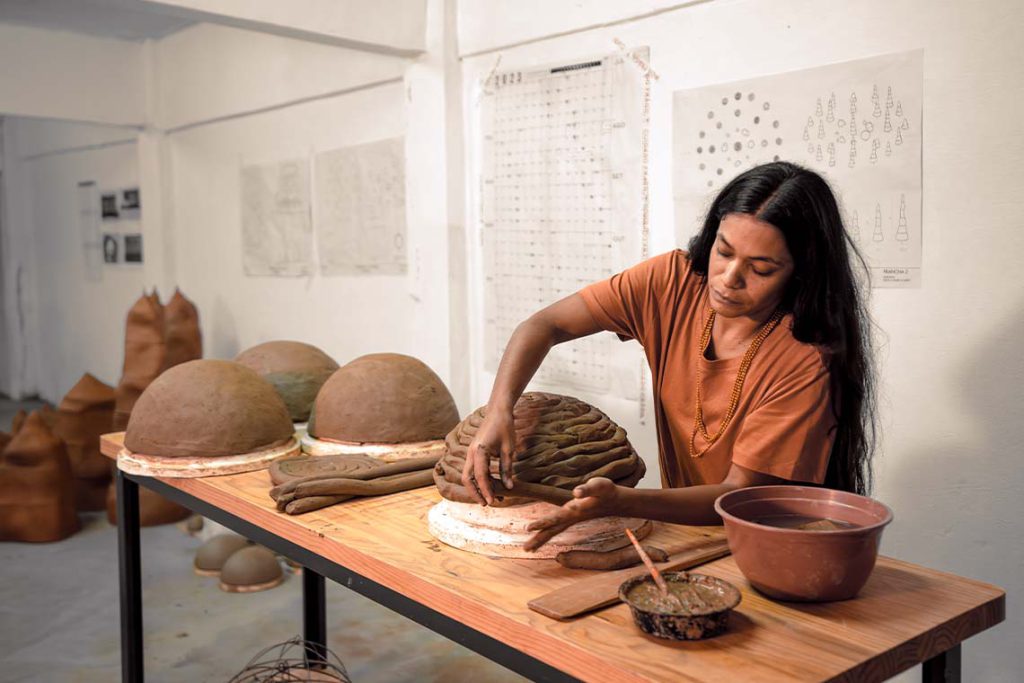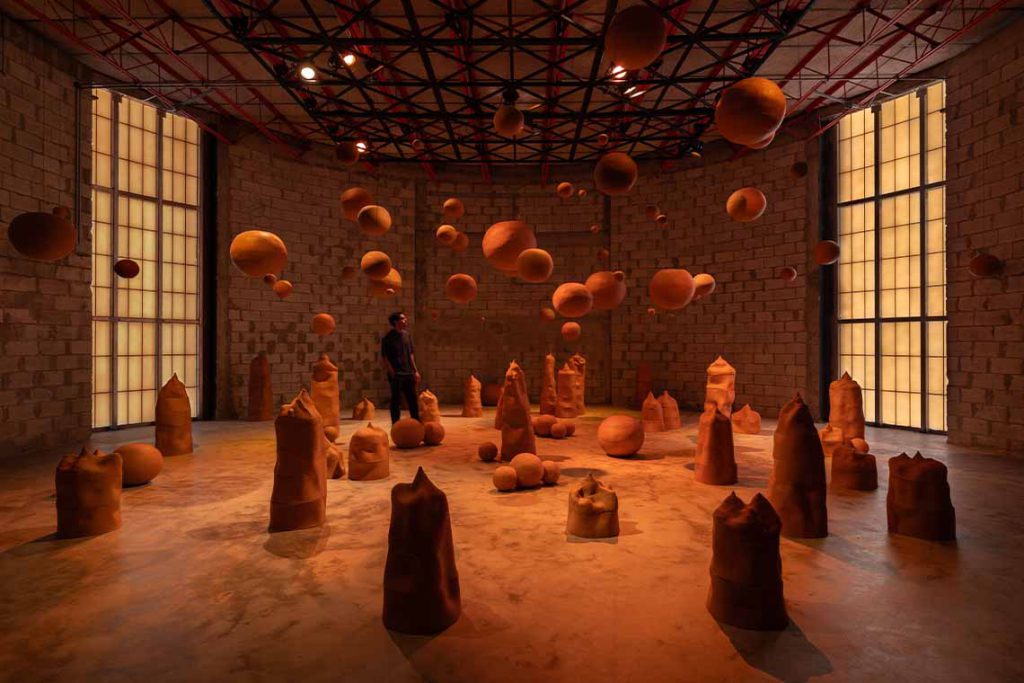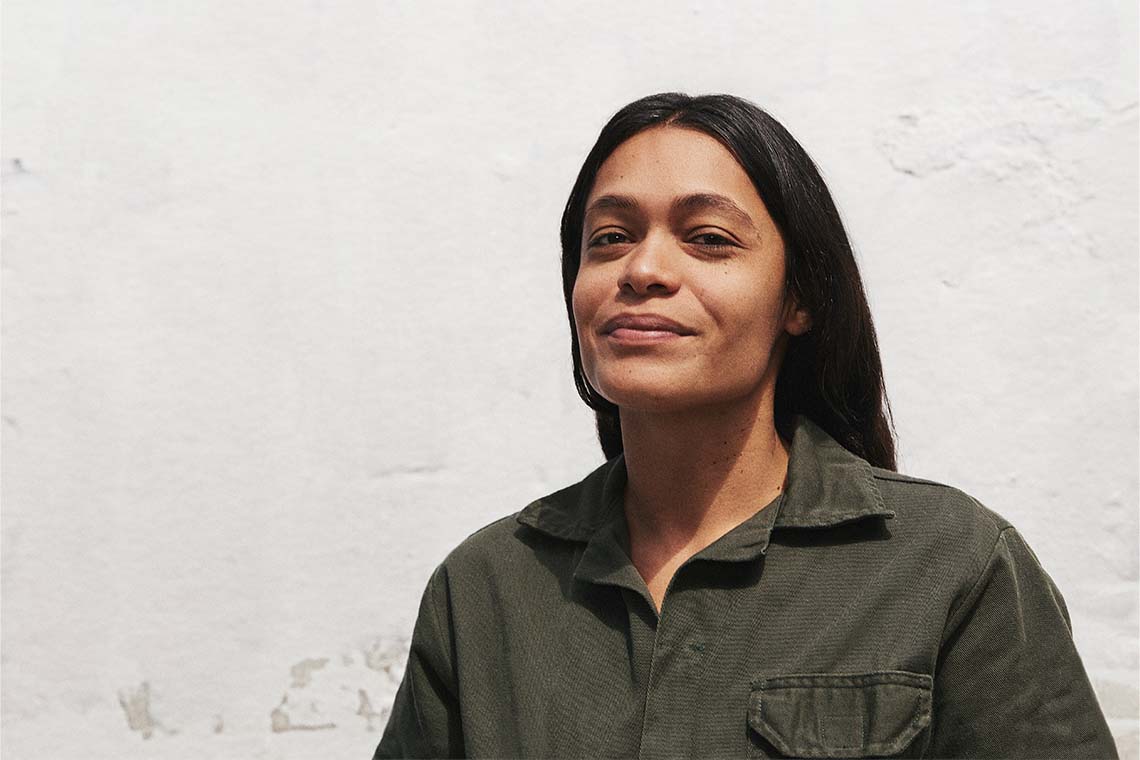The artist speaks about her current Audemars Piguet Contemporary commission, Topography of Memory, held in Miami (5-17 December 2023) in collaboration with guest curator Thiago de Paula Souza, and explains how the commission has helped her think big and broaden her practice.
Canvas: Where does the title Topography of Memory come from?
Sallisa Rosa: I research different paths in my practice, so topography is a different kind of map. It’s like an inside map. I think of memory as something that we have not only inside our body, but also outside in terms of our relationship to earth. So I think of Topography of Memory as this connection between something invisible within ourselves with the more immediately external.
You’ve previously mentioned that memory is deeply connected to the materials you use and have proposed the idea that ceramics have the capacity to store memory.
I work a lot with collected clay and the unique properties that each clay embodies, which relate to where it comes from. Earth, soil and clay all have a lot of stored memory, because they hold information about the land, its history, the plants and other organic material, as well as the trash left behind. When I work with clay, I reprogramme memories. I work it with my hands using a coiling process, a traditional technique, and with this movement I am adding my own memories and those of my family, as well as the memories of the local area, so it all becomes stored inside the clay.
Where is the clay collected from and how do you do source it?
I usually collect it by myself from different parts of Brazil. Some artisans also help me, because installations like Topography of Memory need a huge amount of material. Each region has different colours of clay, due to the particular geography of the location – some are close to rivers, others are drier, and some clays are harder to process because of the amount of rocks and sand present. The material always feels alive though, because of all the textures and information inside.
How do you bring these clays together?
It’s a long process because they are so different, but we mix them together to get the desired result. After the pieces are fired you can see the different tones in the clay – some are almost terracotta, others are more red or brown, with the different regions reflected in one piece. Working this way also speaks to the notion of territory, roots and belonging. I’ve had these conversations with the artisans from the countryside while we work together and discuss the history of our families. It’s a beautiful process.

Where did you meet these artisans?
I’ve always worked with collected clay and I think because we’re all collectors, we know and understand each other. We like sharing our practices. I’ve worked with them since 2019 and we share different clays and our processes as a group. It’s not a specific community, but we are a clay community that sometimes works together for a few months at a time. Since this commission we’ve become closer because I am able to go there and invite more people to collaborate.
The installation in Miami includes multiple handmade ceramics. What form do these take?
There are around 100 pieces in the installation, which is completely immersive. Some pieces come out from the floor, others from around the ceiling. Walking through the space allows for new connections and memories while creating a fictional landscape inside your mind. Within the installation there is only earth or clay, but it is a meditative process. It is possible to walk around between the forms, but audiences may feel something inside of themselves because there are not too many stimuli. Nowadays there is so much stimulation from computers, phones and city lights, but with this work you are able to go back inside yourself. Entrance is free, so it is accessible to everybody.
The work will also take on new memories through this experience, as the clay has now travelled to North America and then it is going back to Brazil again for an exhibition at Pinacoteca de São Paulo from 16 March to 28 July 2024. It’s creating this connection between North America and South America, these different territories, and I’m especially excited to share the installation with my fellow Brazilians.

How did you feel about being approached for the commission with Audemars Piguet Contemporary?
It was a great opportunity, my first solo exhibition in the US and such a huge one! It has both allowed me to do something challenging with ceramics as well as get involved with other artisans and different people. It’s been a lot of work, travelling and collecting the clay, as well as coiling and firing, but Thiago de Paula Souza and the Audemars Piguet Contemporary curatorial team were with me for the entire process and encouraged me to deepen my research about memory and work using this traditional technique with ceramics.
Will you continue working on a larger scale after this commission?
Yes, I’ve really enjoyed it. I’ve had other installations before, but not of this size and made from ceramics only, so this has been on a different scale entirely.



